Children have great fun gardening. But what to do if you don't have a garden or the weather doesn't allow going outside? We give valuable tips.
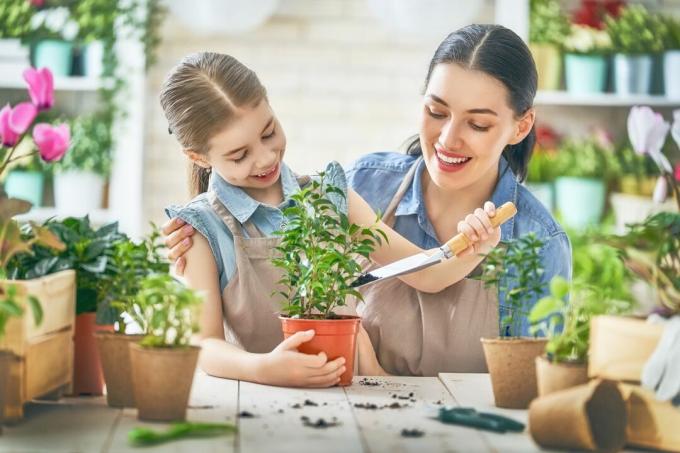
Even if you don't have a garden at your disposal on a regular basis, you don't have to despair. There are great opportunities Getting kids interested in gardening - and that simply in the apartment on the windowsill & Co. We have compiled the best methods for you below.
contents
- Regrowing for kids
- Favorite plants on the windowsill for children
- Children continue to process the harvest
- Introduce children to old garden customs
- Crafting and painting with plants
- Creative garden design with children
Regrowing for kids
If you don't have a garden or balcony, you can still start fascinating cultivation projects. Do you already know the new trend from the USA, which is "regrowing" is called? It is a good example of how sustainability can always be taken a step further. Entire new plants can grow from lettuce stalks, dried ginger remains and turnip cuttings - and this often requires nothing more than a little soil, light, water and patience. Experiencing this small natural wonder is guaranteed to be fun, and not just for children. Incidentally, allowing vegetables to grow back impressively illustrates how we can live in a resource-saving manner, avoid waste and save costs.

The basic principle of regrowing is based on the vegetative regenerative capacity of a specific tissue part of the respective plant. This part is first placed in a water bath until tender growth and root formation can be seen. Now the little plant gets a pot with fresh soil and if the conditions are right, it can be harvested after a few weeks. The best results are achieved with romaine lettuce, spring onions and leeks, but with a little practice and patience you can also grow exotic plants such as pineapple or avocado again. You can find detailed instructions on regrowing in the book "Regrow your veggies“ by our Plantura co-founders Melissa Raupach and Felix Lill.

Book Regrow your Veggies
Lovingly designed guide to regrowing vegetables, herbs & fruit!
SPIEGEL bestseller from our Plantura founders
Favorite plants on the windowsill for children
In addition to the fascinating regrowing plants, various herbs, seedlings and ornamental plants can give the little ones a lot of joy.
- Herbs for children: They are part of the basic equipment for all young gardeners. The big advantage with the standard herbs chives, parsley and basil in the pot is that you can easily bring them from the garden or balcony into the warm house when winter comes.
- seedlings: Most of us are familiar with the cress head, where cress seeds come out of a substrate-filled old pantyhose germinate in the shape of a head and it looks as if the cress man had "hair" grow. But not only cress can be grown very quickly and spontaneously (and therefore child-friendly) with a little help from adults, many other seeds are also suitable for germination. beetroot sprouts, radish or alfalfa are a nutritious and tasty addition to the diet. When cultivating the seedlings, you should pay great attention to sufficient ventilation so that mold does not stand a chance.
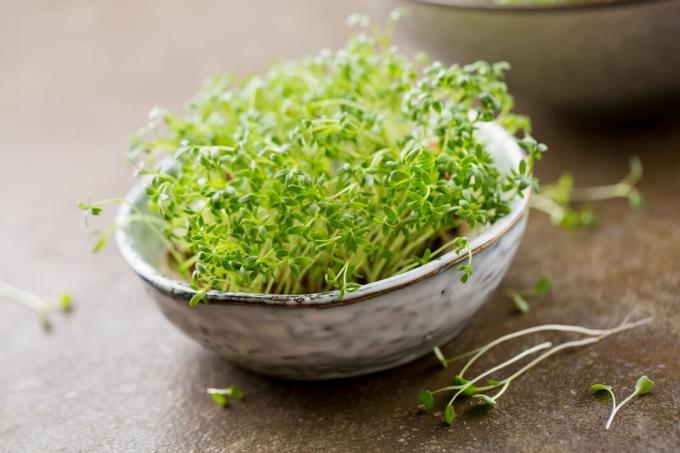
- Curiosities for children: Like many adults, children also succumb to the fascination of the exotic and the special. The Brood Leaf (Bryophyllum sp.) combines both: The easy-care thick-leafed plant has babies and is a medicinal plant for everything. Even "freckles" can be found as an indication. The African plant reproduces vegetatively via many small "kindles" that grow on the leaf edges, then fall off and colonize the surrounding pot landscape. A plant that does the regrowing all by itself, so to speak. Goethe supposedly loved this plant like his Teltower Rübchen. A permeable substrate, lots of sun, little water and a slightly cooler hibernation - that's all you should consider when caring for the brood leaf. This makes the exotic an ideal houseplant for children.
Children continue to process the harvest
It fills children with joy and pride to process their own harvest into jam, blossom or herb salt at home. You can see directly that regular and ongoing care of the plants pays off. Being able to eat your own harvest is certainly a motivator for the coming season. But even if you don't have your own garden: Some products can be easily combined with the produce small ones from wild collections, such as the vitamin-rich and tasty "Dirndlhonig" (cornelian cherry, Cornus mas), the delicately scented elderflower syrup (Sambucus nigra) or the intensely green wild garlic salt (Allium ursinum). The self-processed products can be nicely packaged and then given away as small gifts by the little ones. Below is a favorite recipe that's also easy.
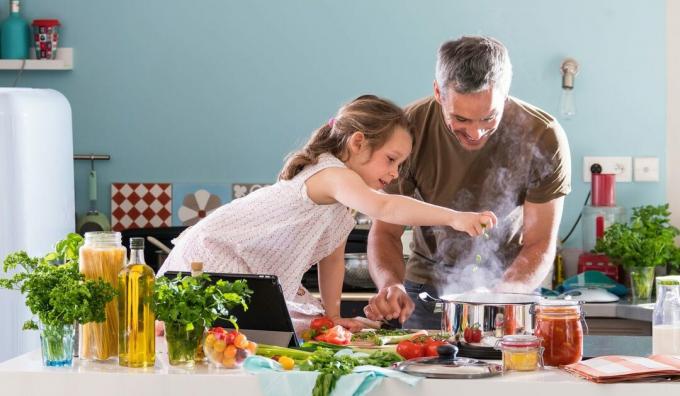
Wild garlic salt: When the tender wild garlic leaves push through the dry layer of leaves in March, it is time to take the little ones for a walk in the forest and start collecting. The rich green color can be impressively preserved for a few months if the fresh herb is ground into a fine powder with the salt. Before bottling, let the salt dry for a few days, turning it over several times. It is loved by young and old, especially on sandwiches. Alternatively, the herbs from the window sill and wild herbs like Chickweed, ground ivy, yarrow, nettle, deadnettle, horsetail and so on into the mixture.
Introduce children to old garden customs
Children are open to everything magical. Let them know that the garden and plant world is magical and full of wonder by sharing ancient customs and stories about the garden. Children love stories - and there are so many beautiful classics that are entwined around mysterious gardens and can bring the garden into the house even on a cold winter's day. For example, tell the story "Little Ida's Flowers," in which the main character secretly watches the flowers sway as they dance at night. Or read Oscar Wilde's fairy tale "The Selfish Giant", in which a giant is allowed to learn that the eternal winter only leaves his garden when he welcomes the banished children back into it called.
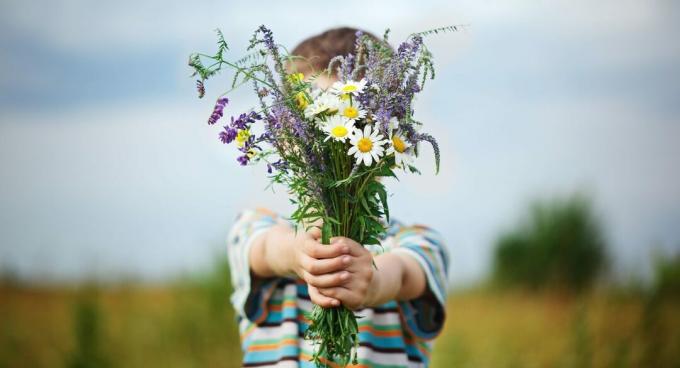
Pass on old garden customs to your offspring. Knowing this can inspire your own creative interpretations. In Sweden, for example, there is the beautiful custom of the dream bouquet: At the summer solstice, you have to climb over nine pasture fences to pick nine different flowers. This bouquet under the pillow lets the picker dream of her future husband that night. Or do you know the many games you can play with just the inflorescences of the plantain (Plantago sp.) can play? Or do you know that the lindworm under the linden tree (Tilia sp.) lives?
Another idea is to look up the magic effects of old witch's herbs and home remedies together. For example, the real houseleek was used for planting on the peat roofs to protect against lightning and also as a good luck charm for the yard.
Crafting and painting with plants
You can paint directly on paper with flowers and parts of plants. In such a "Florell" there are sometimes surprising effects, for example with the yellow flowers of the St. John's wort (Hypericum sp.) achieve a red color on the paper. You don't need your own garden for this: many coloring wild plants - how goldenrod (Solidago sp. – yellow) or the berries of the elder bush (Sambucus nigra – dark purple) can be collected during walks in (city) nature. Other plants are, for example, the common trefoil (Lotus corniculatus – yellow), bluebells (Campanula sp. – blue) or plain grass (green). Many common and easy-to-grow garden plants are also good for dying eggs or textiles. Here are the marigold (tagetes – orange) and the hibiscus (Hibiscus syriacus – purple) as examples.
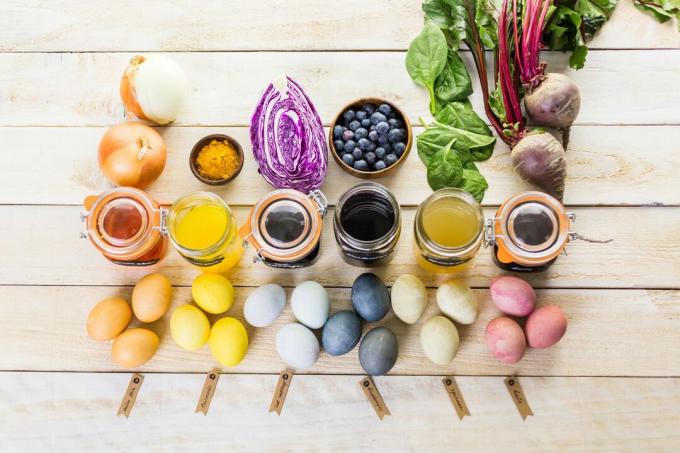
Creative garden design with children
If a garden or balcony is available, but spring is still a long way off, craft projects to beautify the "kindergarten" can shorten the waiting time:
Smooth stones can be painted and varnished by yourself to later serve as a bed edging. The little ones can shape name tags out of clay, make colorful pinwheels and garlands, wrap branches with colorful scraps of wool, and make tea light holders from old jam jars. For the older ones among the young gardeners, building a seat from old Euro pallets might be interesting. Such simple means build identity and help maintain interest in the garden year after year.
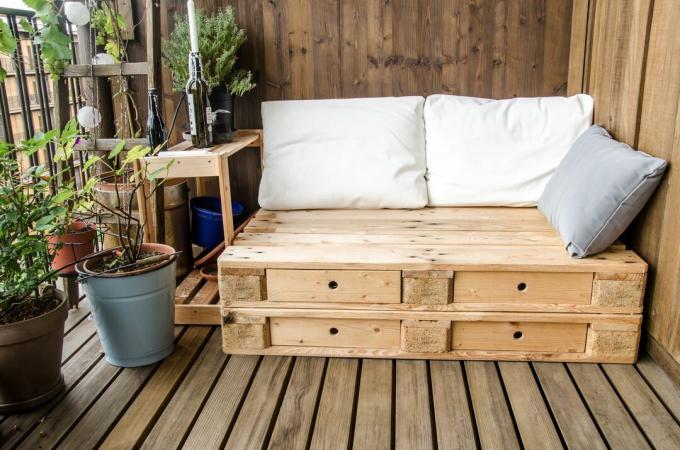
Tip: Fun design can also be easily combined with animal welfare and raises children's awareness of ecological connections. The little ones are enthusiastic about building an insect hotel, piling up piles of leaves support hedgehogs in autumn (be sure to layer larger branches under the foliage) or bird feeder and build nesting boxes for birds.
the best plants for gardening with kids we have summarized them here in a special article for you.
And other great ones Tips for urban gardening with children you'll find here.
...and receive concentrated plant knowledge and inspiration directly in your e-mail inbox every Sunday!



